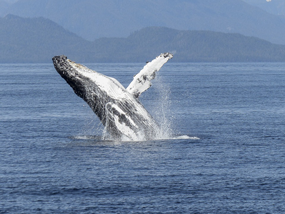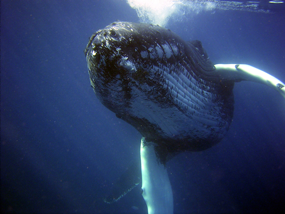Whale Migrations and Marine Natural Protected Areas of the Baja California Peninsula
Introduction
The Mexican government is currently promoting Natural Protected Areas (NPAs) as mechanisms to protect and encourage the sustainable development of many regions of environmental importance throughout the nation and to maintain the biological corridors for protecting the migration of many marine, terrestrial and avian species. This seminar shall shed light on the importance of marine NPAs in the Baja California Peninsula and coastal biological corridors in the “Californias” for preserving connectivity in the life cycle of migratory species, particularly baleen whales, as well as the threats and impacts posed to NPAs as a result of anthropogenic activities.
Overview
Natural Protected Areas (NPA) help to maintain key habitats, provide shelter, and enable migration and movements of species, ensuring the maintenance of natural resources. NPAs constitute fundamental instruments in the enforcement of environmental policies and are considered essential to preserve biodiversity. NPAs are also perceived as an important engine for sustainable development. The Peninsula of Baja California is a privileged geographical area and has provided the ideal scenario to create protected areas, in order to preserve natural resources, biological corridors, and at the same time respecting, instructing and supporting socio-economic activities of localities with a high natural, historical and cultural value. The importance of NPAs has been recognized not only by the Mexican government, but also on an international scale and their performance as biological corridors for many land and marine species have been shown to be effective.
The coast of the Peninsula of Baja California is the regular migratory destination during the winter season of three of the most well-known baleen whales’ species: the blue whale, the gray whale and the humpback whale. Each one of these whales has different migratory routes and different feeding grounds during the summer season. Considering the wide range of ecosystems, habitats and connectivity in the life cycle of these whales, cooperation and coordination of the governments and research institutions of the different countries involved is essential in order to evaluate the conservation status of the species and develop the management actions necessary to keep the recovery of these whales’ populations.
The seminar will address how obstacles to sustainable NPA management can be overcome by the economic, social and environmental benefits that these regions offer. The seminar will also shed light on initiatives for cooperation and coordination currently being undertaken between governments and research institutions of different countries for evaluating the conservation status of migratory whale species and developing the management actions necessary to keep the recovery of these whales’ populations through NPAs.
Whale Migrations and Marine Natural Protected Areas of the Baja California Peninsula
Date: September 13, 2016, 12:00 p.m. - 2:00 p.m.
Where: Scripps Cottage
Faculty Leader: Vinod Sasidharan Ph.D.
Event Speakers: Dr. Oscar A. Arizpe C., Universidad Autonoma de Baja California Sur Dr. Jorge Urban, Universidad Autonoma de Baja California Sur Dr. Serge Dedina, WildCoas

